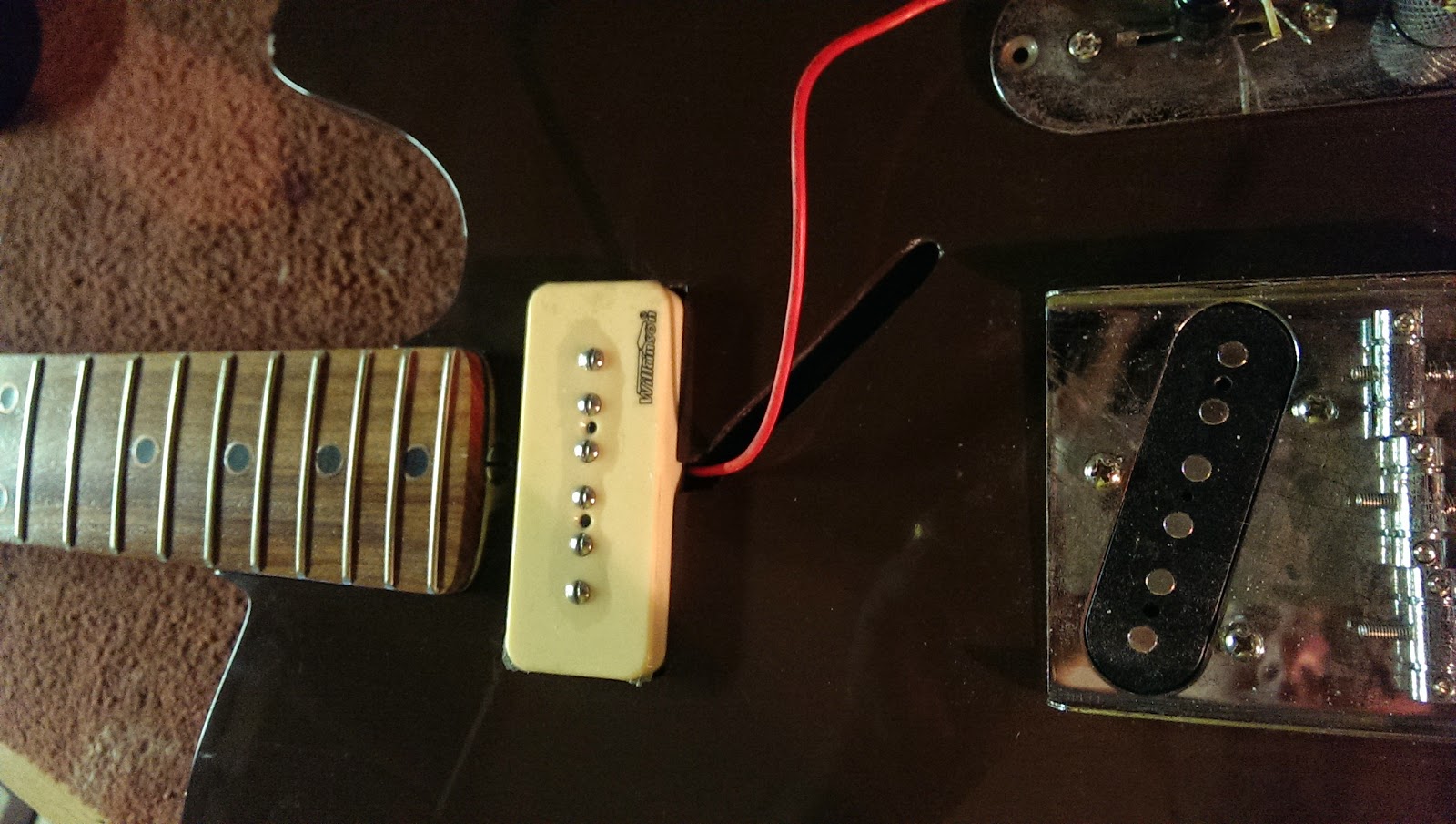It has been some time since I posted anything about this guitar, in my last update I had filled and sanded the body ready for paint but the weather was too cold so I put off painting until things warmed up. During the course of the summer I primed the body but noticed one of two areas where the paint bubbled so I would sand back and prime again.
I decided to paint the body brown in the end, the neck is oak and I liked the idea of earthy colours for this particular guitar. After several coats of brown paint and lacquer I left the body to hang in the garage while I went on vacation and everything seemed fine.
However when I looked at the paint after my holiday the same bubbling had occurred. I suspect it was down to the wood I used. I believe it must have not been fully dry and moisture is trying to escape causing the bubbles. So my choice was to sand the body down to bare wood again or have a go at creating a 'relic'
I decided to go for the relic option and set about sanding away at the finish I had so painstakingly produced with sand paper and wire wool. Luckily the worse of the damage to the paintwork was right on the front and back where the guitar would normally sit under the players arm and the perfect place to simulate years of playing.
I took a lot of paint off using a course sand paper and then started gradually feathering the edges to produce a nice gentle transition between the paint and the bare wood before wet sanding the body as I would normally.
I imagine the player of this guitar wore a heavy trademark leather jacket which just wore away the paint over years of repetitive use! He may have even refinished the guitar himself a couple of times... Who knows, it's all make believe!
The exposed wood looks too new underneath so I stained it with a couple of coats of darkish wood stain. I then rubbed most of this out with wire wool. There were a couple of other
While I was working on the body I also started the ageing process on the metal components. I had read that PCB etching fluid was ideal for this and I just happened to have a tub full at home! The technique requires some roughing up of the chrome parts first (a couple of light scratches here and there and rub down with wire wool especially in areas where wear would normally occur over time).
The components are then covered with a single ply of tissue and the etching solution is brushed on and left until the desired amount of ageing is achieved. It worked perfectly until I realised I had aged the wrong bridge! I aged the correct bridge in the same way and the results were great. I want to repair a little bit of the damage so everything was buffed with metal polish.
The results were great. I didn't damage any of the screw threads in the same way but some of the screw heads received the same treatment.
While this was going on I was also bumping and dinging the body with anything I could fine, particularly around the base where it may have stood on hard stage floors or bumping into amps. Also around the jack socket and behind the bridge adjustment screws.
I tried the neck on for size and it fits great. I don't plan on doing any damage to the neck, once again i imaging the old one wore out and this is a recent replacement!
Next I have to decide what pick guard to put on this guitar, I have some ideas including something completely original but that will have to wait until my next post.



























